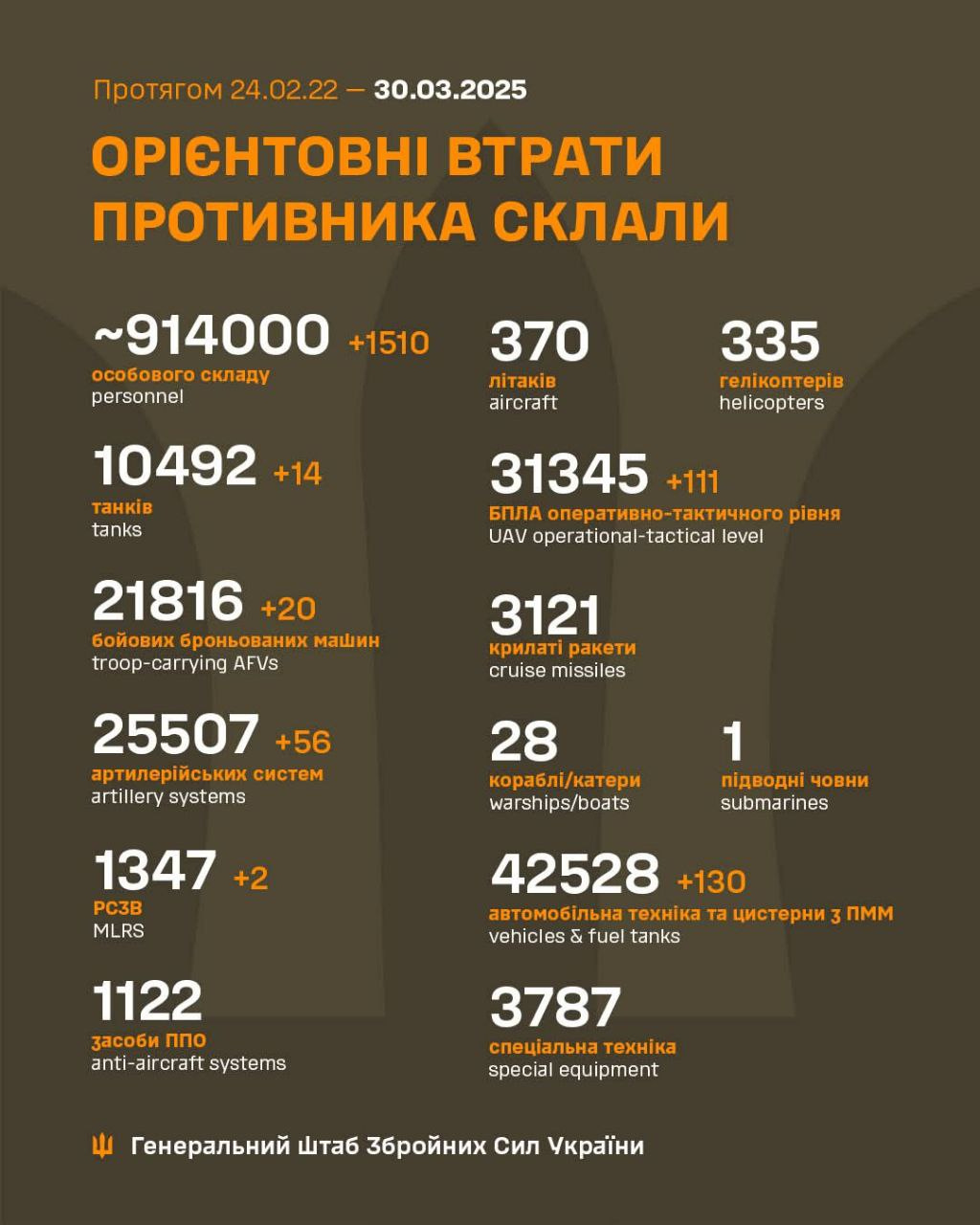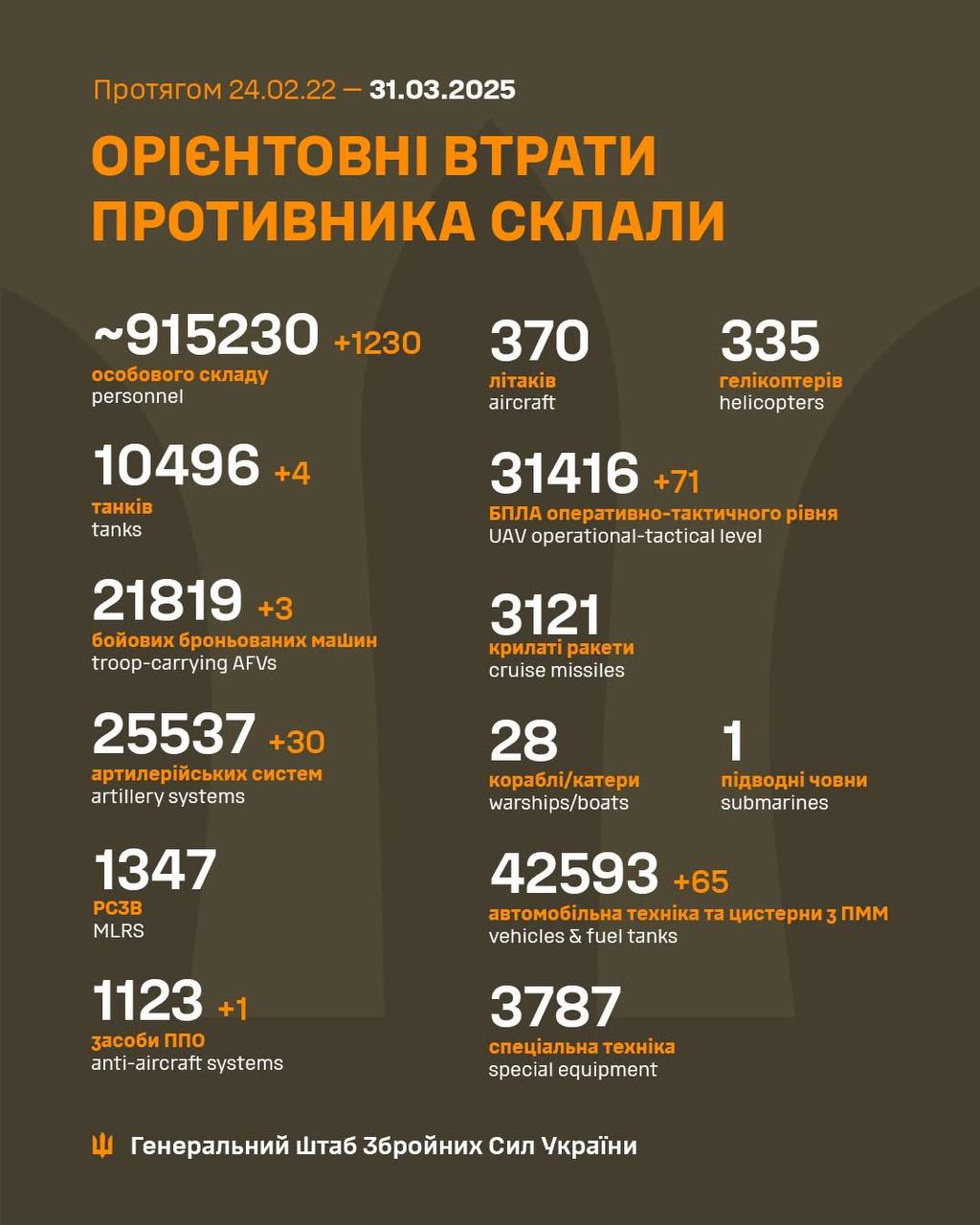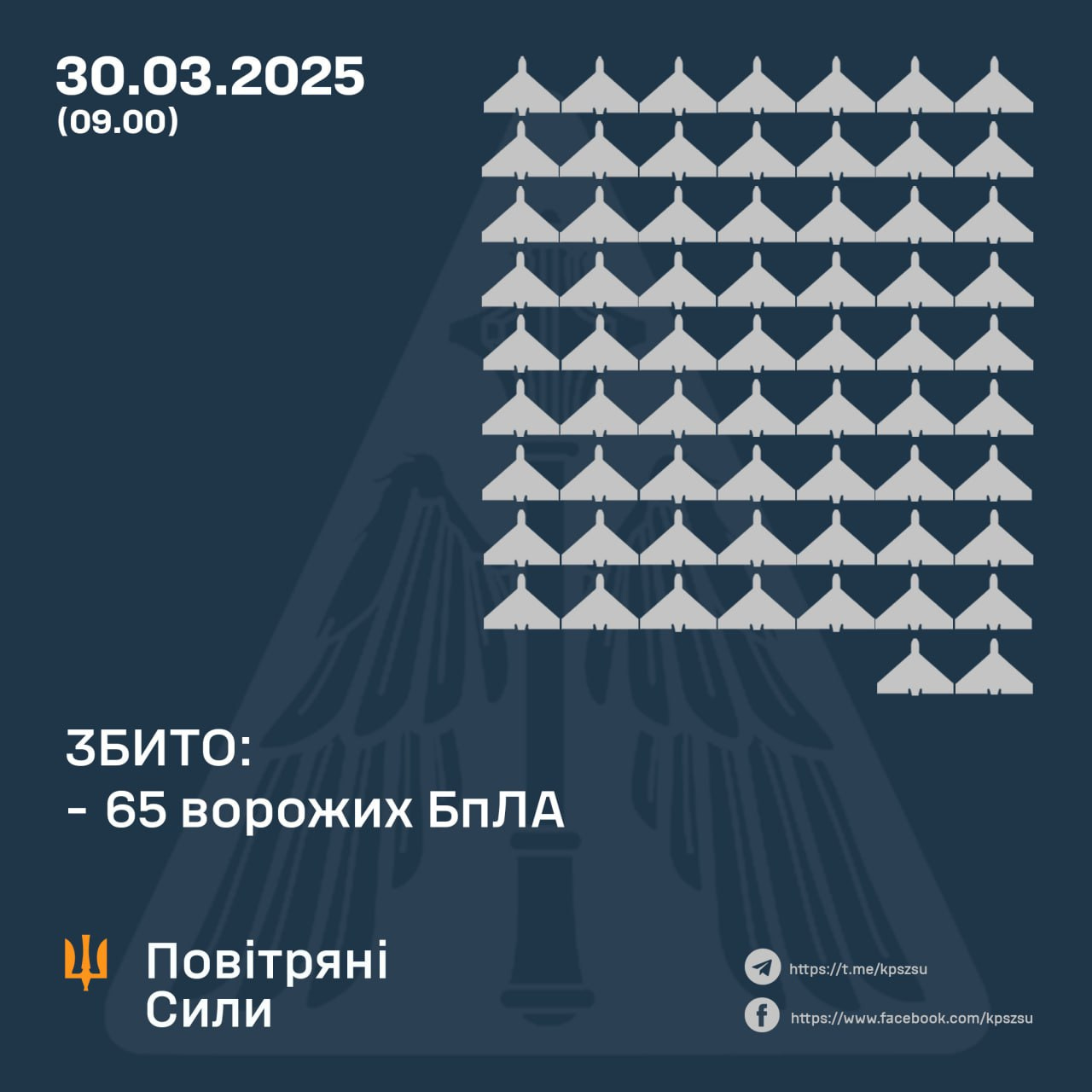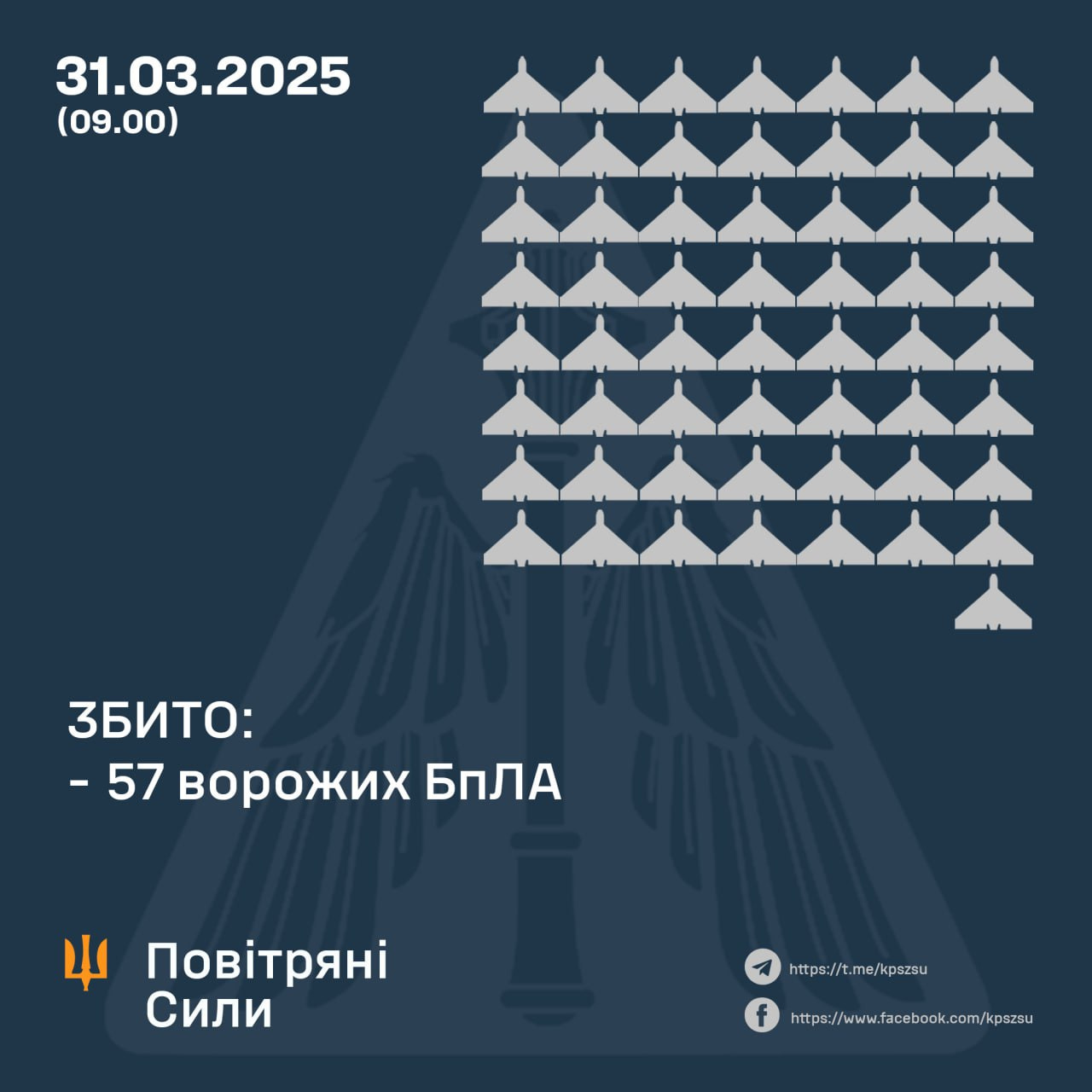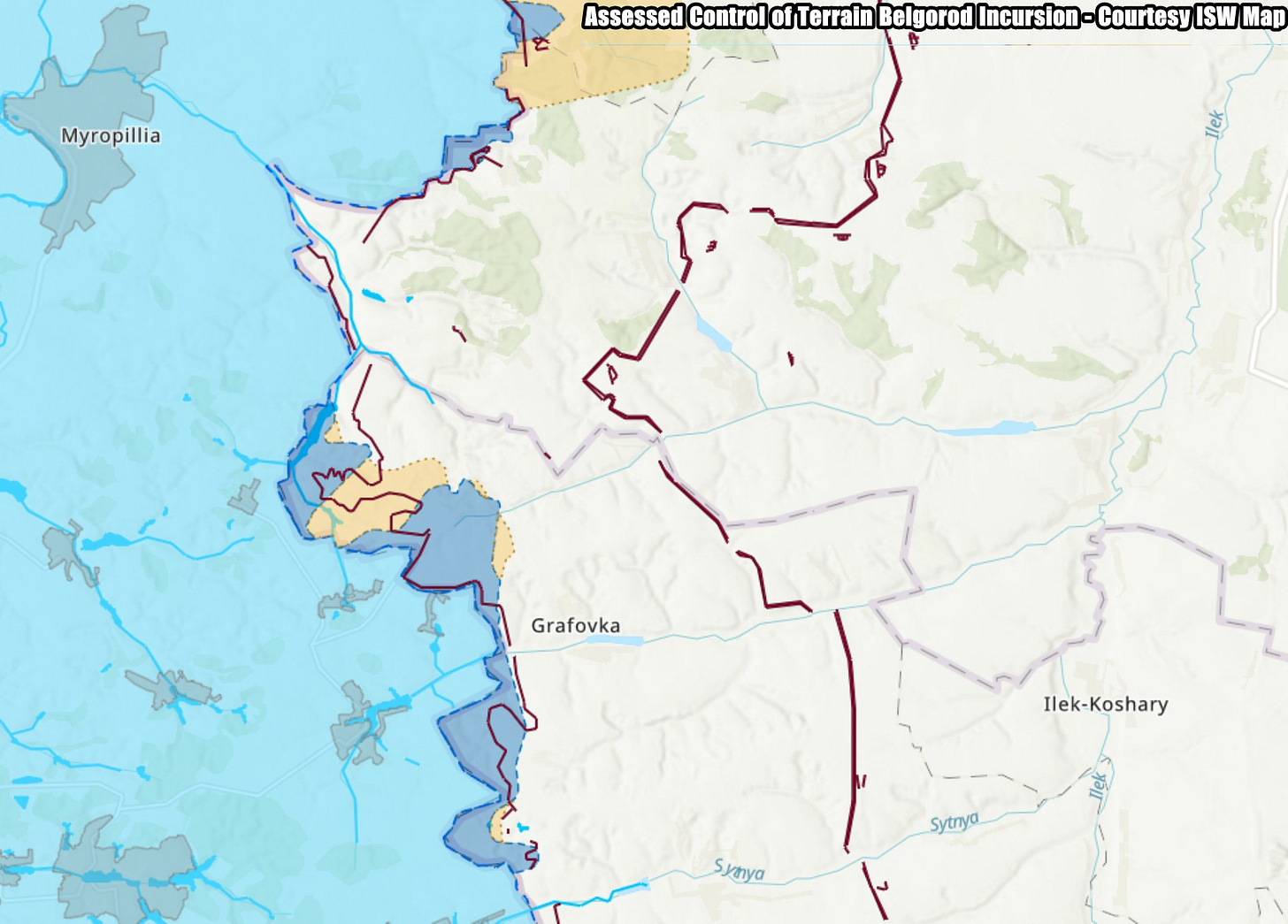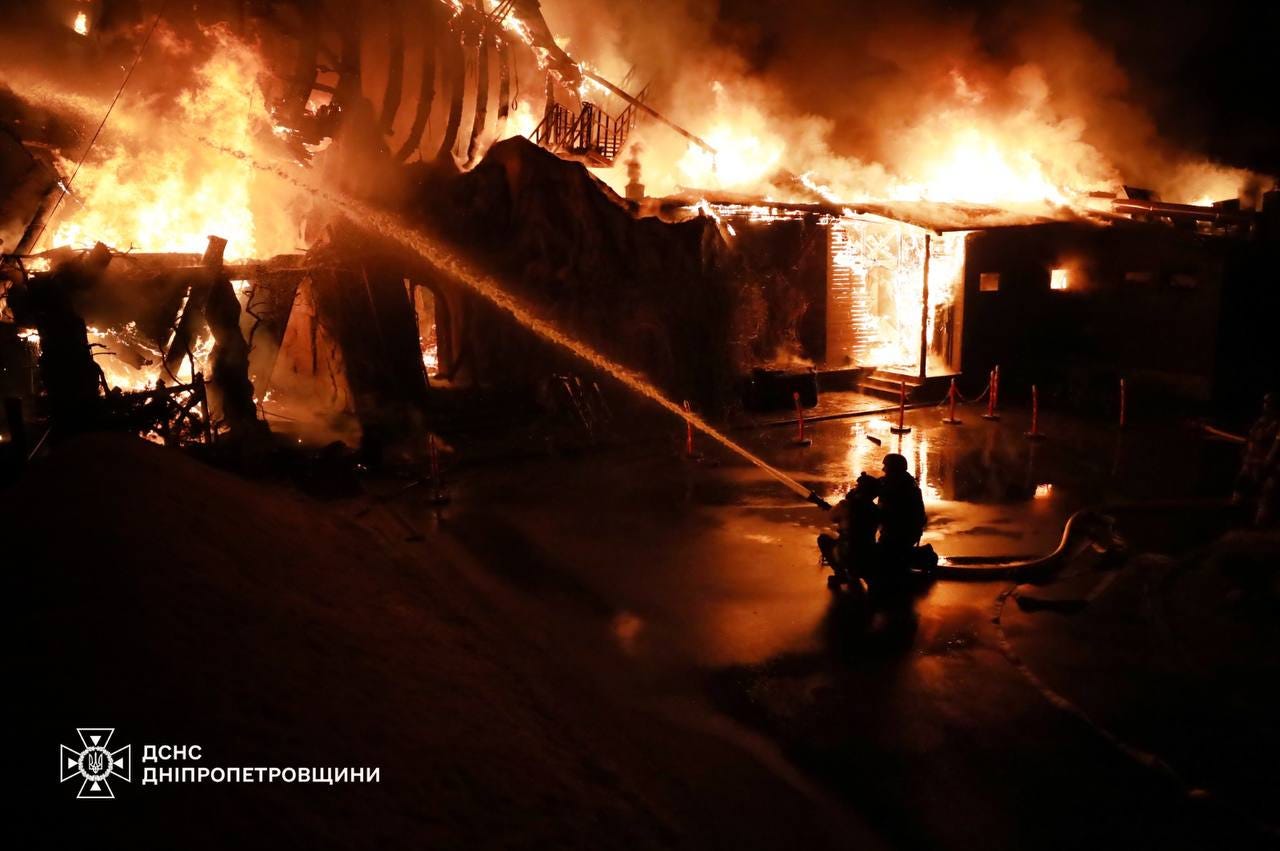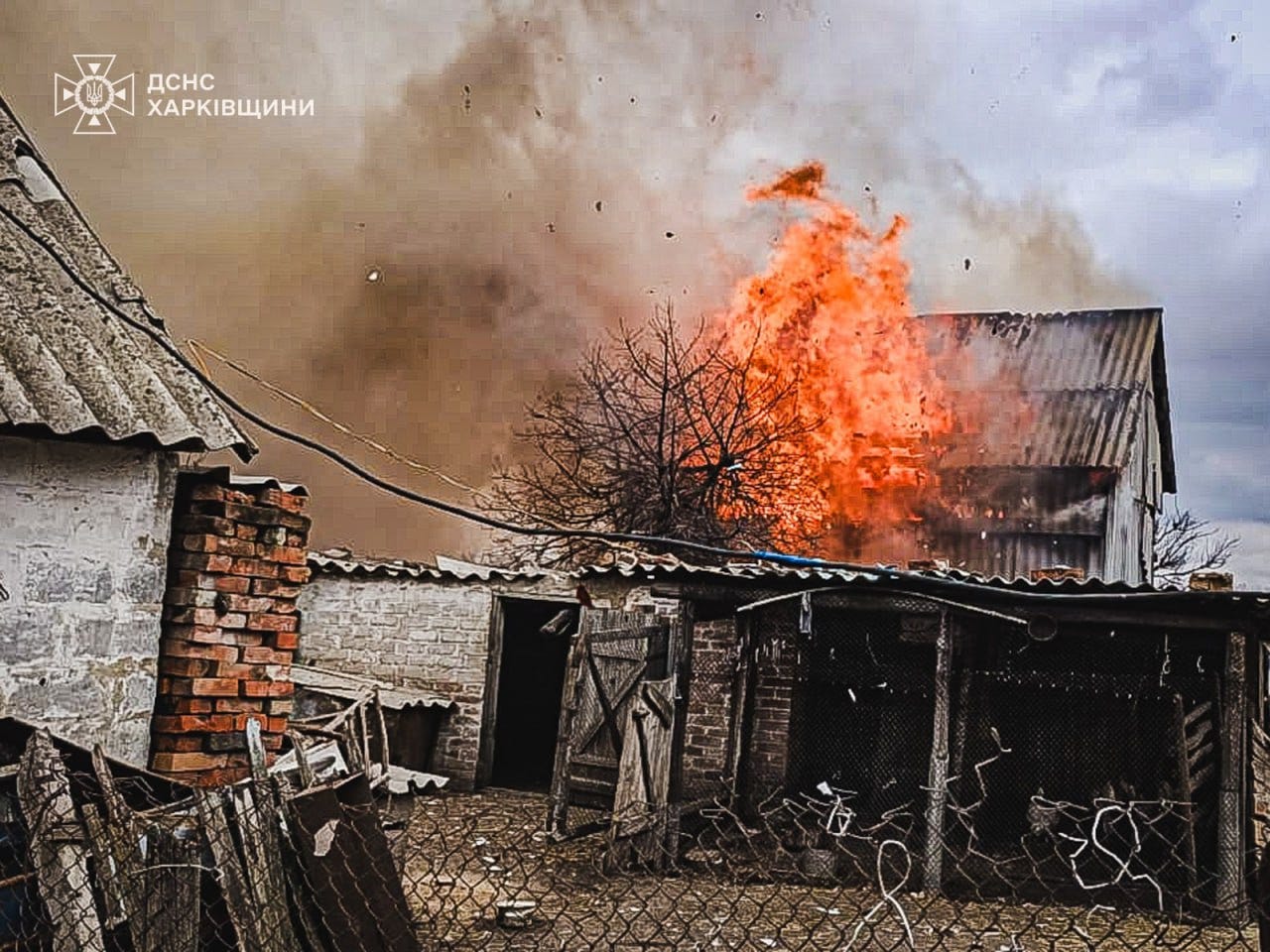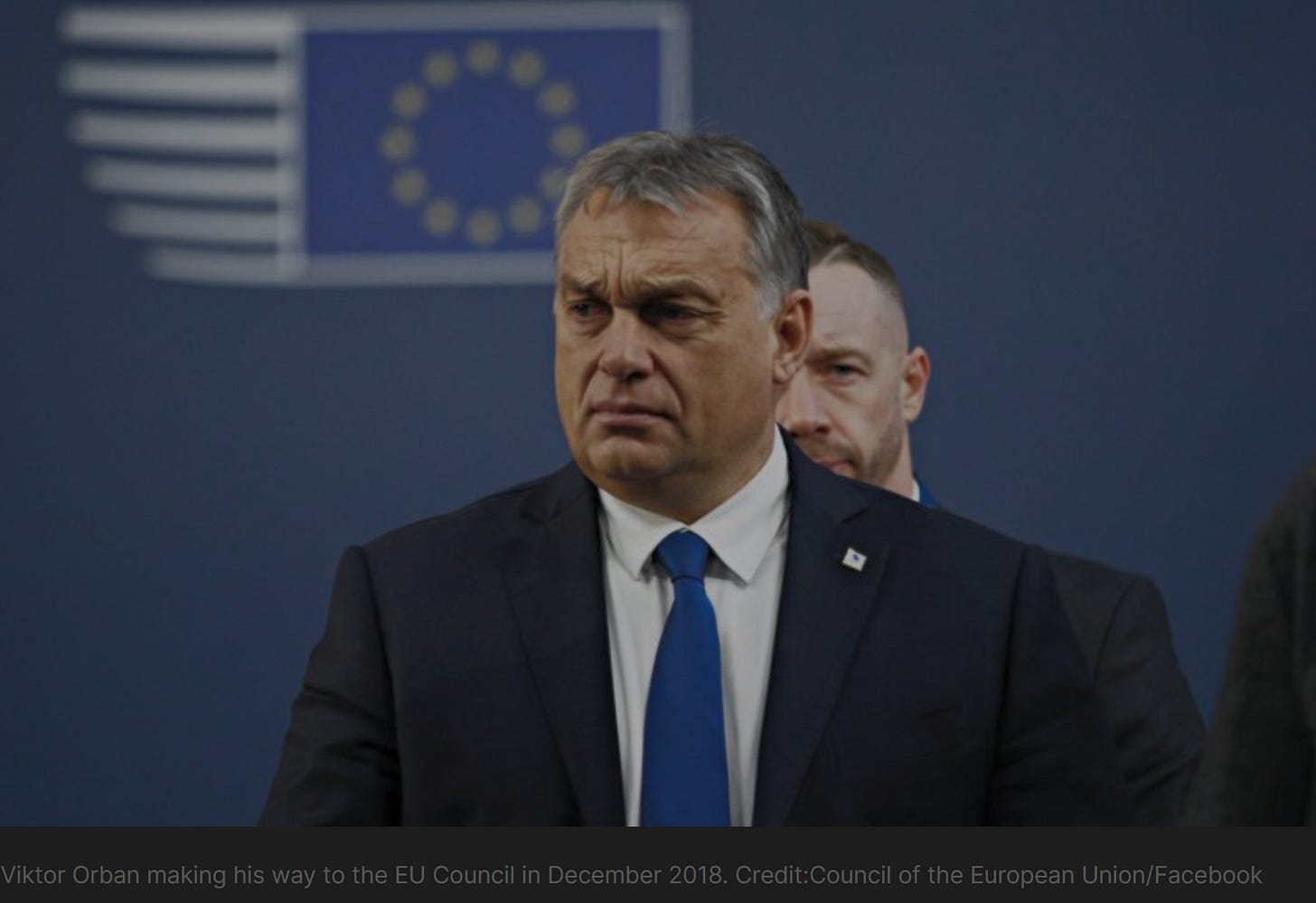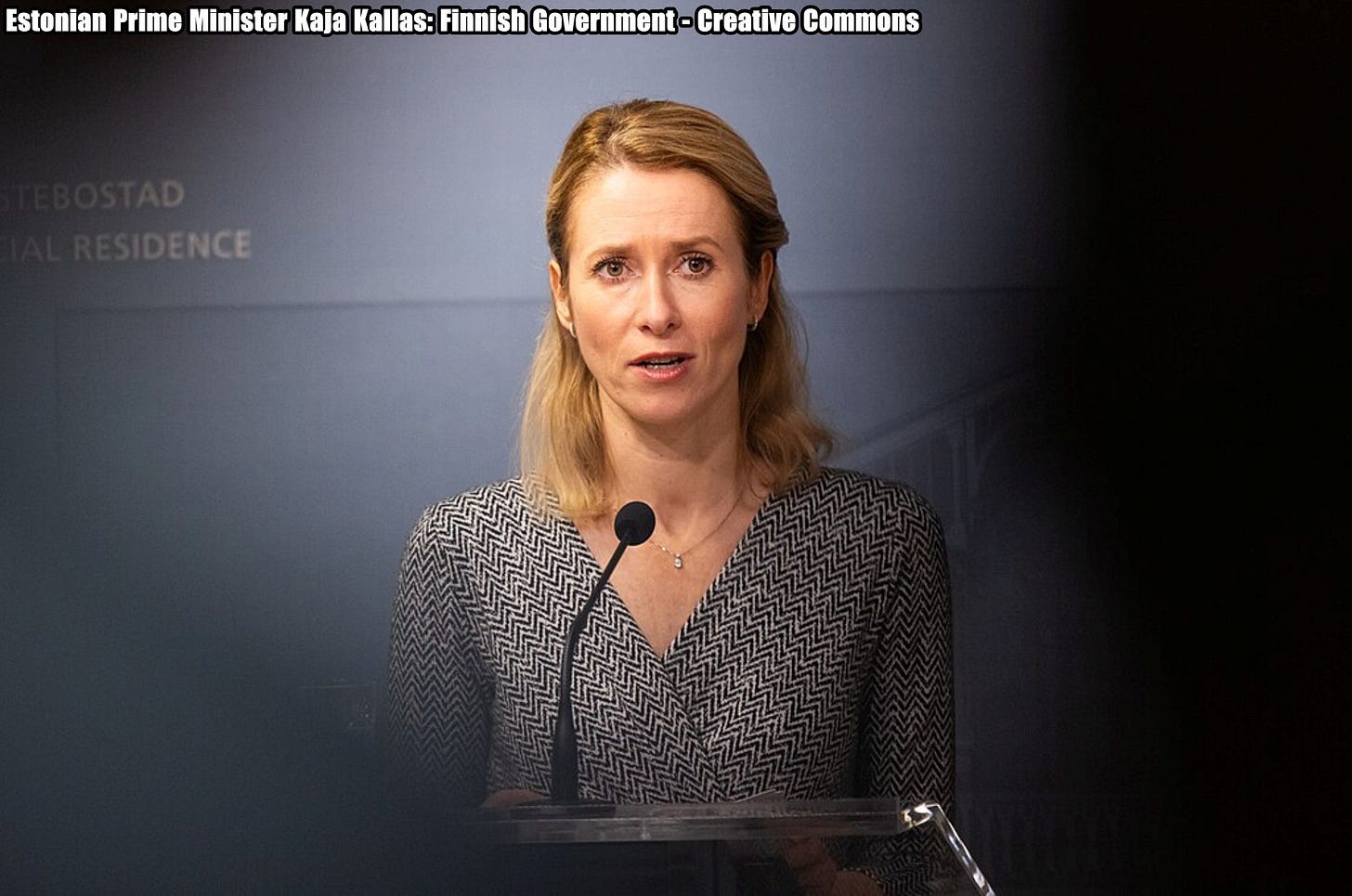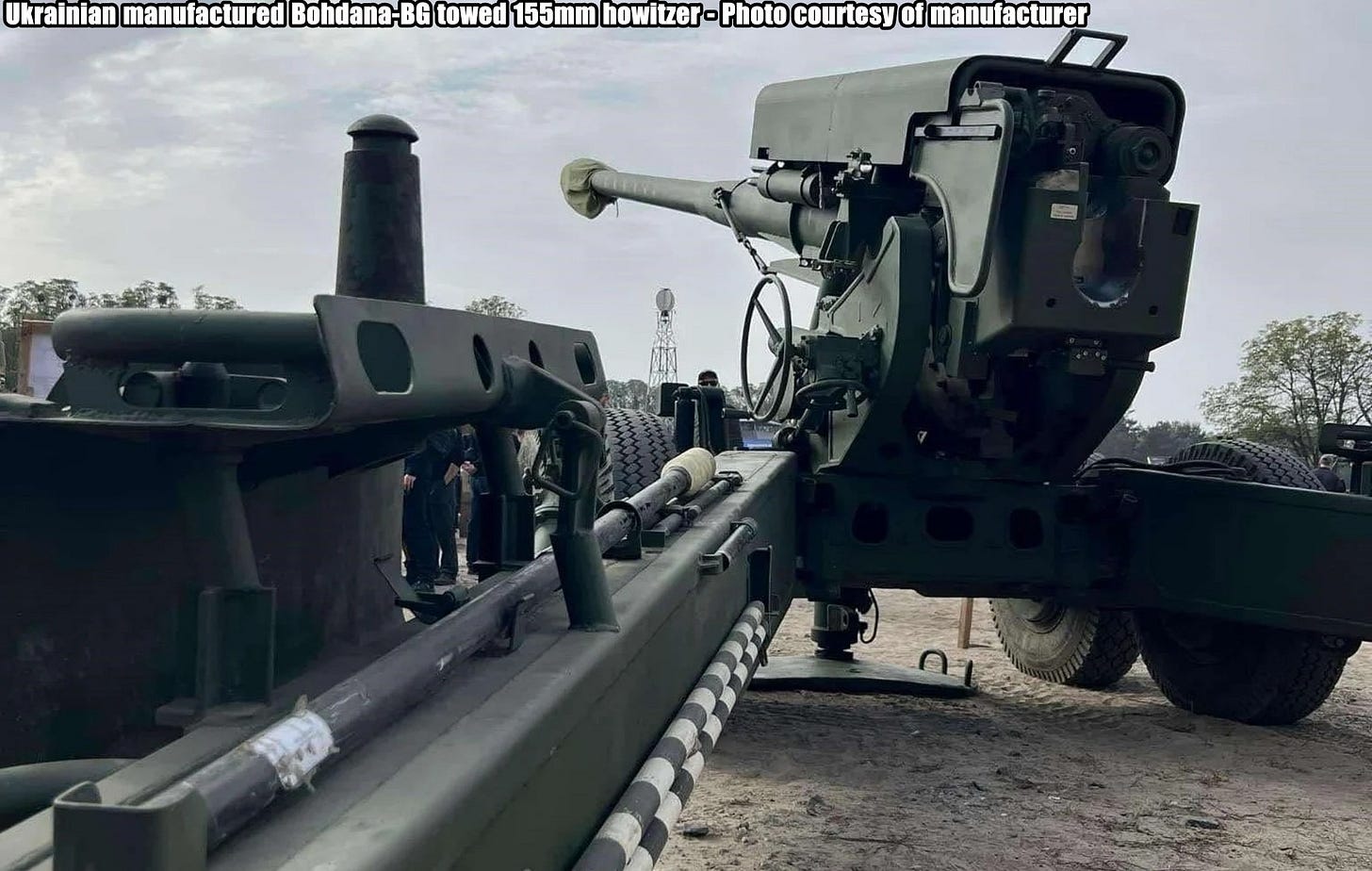Slava Ukraini! In early 2022 I began a Telegram channel aggregating news from a number of sources daily on the war in Ukraine. In June 2023 I began providing a daily draft for the Ukraine War Brief Podcast collecting news from over 70 sources daily, which formed the basis of the script. While the Podcast no longer exists I have continued to make this Brief available for my followers here on Substack for those who wish to keep up with the news from the war.
All the latest news on the Russo-Ukraine War 6 days per week
Hello folks, there have been a great deal of developments over the weekend so this edition of the Brief is a little longer than most.
ALONG THE CONTACT LINE
GSAFU Morning Report
For: Mar 31, 2025
The General Staff of the Armed Forces of Ukraine in its Operational Information update at 08:00 on Mar 31 stated that day 1132 of the full-scale invasion of the Russian Federation against Ukraine had begun.
The situation on the line of combat remains tense in some sectors. Ukrainian defenders continue to actively counteract the Russian aggressor, causing them significant losses in personnel, equipment and technology. Exhausting the enemy along the entire front line and continuing to disrupt the plans of Russian occupiers to advance deeper into the territory of Ukraine.
During the past two days, 404 combat engagements took place.
Over the past 48 hours, the enemy carried out 3 missile strikes, 207 air strikes, used 5,365 drones and fired approximately 11,300+ artillery shells across the positions of Ukrainian forces and civilians.
Air Force Daily Report
65 ENEMY UAVS SHOT DOWN, 35 SIMULATOR UAVS FAILED TO REACH THEIR TARGETS (LOCATIONALLY LOST)
➖➖➖➖➖➖➖➖➖
On the night of March 30, 2025 (from 20:00 on March 29), the enemy attacked with a ballistic missile from the Rostov region - Russia and 111 Shahed attack UAVs and simulator drones of various types from the directions: Millerovo, Kursk, Bryansk, Primorsko-Akhtarsk - Russia, Chauda - Crimea.
The air attack was repelled by aviation, anti-aircraft missile troops, electronic warfare units, and mobile fire groups of the Air Force and Defense Forces of Ukraine.
As of 09:00, it has been confirmed that 65 Shahed attack UAVs (and other types of drones) have been shot down in the north, south, east, and center of the country.
35 enemy drone simulators were lost in location (without negative consequences).
The Kharkiv, Sumy, Odessa, and Donetsk regions were affected by the Russian attack.
57 ENEMY UAVS SHOT DOWN, 45 SIMULATOR UAVS FAILED TO REACH THEIR TARGETS (LOCATIONALLY LOST)
➖➖➖➖➖➖➖➖➖
On the night of March 31, 2025 (from 20:00 on March 30), the enemy attacked with two Iskander-M ballistic missiles from the Kursk region - the Russian Federation, the 131st Shahed attack UAV and simulator drones of various types from the directions: Millerovo, Kursk, Bryansk, Orel, Primorsko-Akhtarsk - the Russian Federation.
The air attack was repelled by anti-aircraft missile troops, electronic warfare units, and mobile fire groups of the Air Force and Defense Forces of Ukraine.
As of 09:00, it has been confirmed that 57 Shahed attack UAVs (and other types of drones) have been shot down in the north, east, and center of the country.
45 enemy drone simulators were lost in location (without negative consequences).
The Sumy, Donetsk, Kharkiv, Kyiv, and Zhytomyr regions were affected by the Russian attack.
Combat Operations in the Russian Federation
The Institute for the Study of War (ISW), a US based think tank, in its Mar 30 Russian Offensive Campaign Assessment reported that
Kursk Salient: Russian forces continued assaults in Kursk and northern Sumy oblasts on Mar 30 but did not make any confirmed advances.
Belgorod Incursion: Russian forces continued assaults in northwestern Belgorod Oblast on Mar 29 but did not make any confirmed advances.
The Khortytsia operational-strategic group
(Responsible for the northeastern part of Ukraine. )
Toretsk Sector: Russian forces recently advanced in and near Toretsk.
Geolocated footage published on Mar 28 and 30 indicates that Russian forces recently advanced north of Toretsk and in central Toretsk.
The Tavria operational-strategic group
(Responsible for the central-eastern and southeastern part of Ukraine.)
Pokrovsk Sector : Russian forces recently advanced in the Pokrovsk direction.
Geolocated footage published on Mar 30 indicates that Russian forces recently advanced in northeastern Shevchenko (southwest of Pokrovsk).
Geolocated footage published on Mar 29 indicates that Russian forces recently advanced in western Uspenivka (southwest of Pokrovsk).
The Odesa operational-strategic group
(Responsible for Kherson, Qırım, (also known as Crimea) and the Black Sea.)
There have been no major changes to the combat environment since our last report.
TEMPORARILY OCCUPIED TERRITORIES
Nothing major to report.
THE HOME FRONT
Russia continues to intentionally target civilians in Ukraine.
The Institute for the Study of War (ISW), a US based think tank, in its Mar 29 Russian Offensive Campaign Assessment reported that Russia continues to target civilian infrastructure in Ukraine amid reports of shifting and more deadly Russian strike tactics. The Ukrainian Air Force reported on Mar 29 that Russian forces launched 172 Shahed and other strike and decoy drones from the direction of Kursk City; Millerovo, Rostov Oblast; Primorsko-Akhtarsk, Krasnodar Krai; and occupied Cape Chauda, Crimea overnight on Mar 28 to 29.
The Ukrainian Air Force reported that Ukrainian forces downed 94 drones and that 69 decoy drones became "lost," likely due to Ukrainian electronic warfare (EW) interference. Kryvyi Rih Military Administration Head Oleksandr Vilkul reported on Mar 29 that Russian forces also launched ballistic missile strikes against Kryvyi Rih, Dnipropetrovsk Oblast.
Ukrainian officials reported that Russian strikes damaged a hotel-restaurant complex, houses, and buildings in Dnipro City, killing and injuring civilians.
ISW continues to assess that Russia is targeting Ukrainian critical and civilian infrastructure under the cover of the ceasefire on energy infrastructure strikes, contradicting US President Donald Trump's stated objective of using the temporary ceasefire to achieve a lasting peace in Ukraine.
Russian forces are reportedly employing more advanced long-range drones, complicating Ukrainian air defense operations and allowing more drones to penetrate Ukraine's air defense umbrella. German outlet BILD reported on Mar 28 that Russia has intensified and adjusted its use of long-range strike drones, making it increasingly difficult for Ukrainian forces to intercept them.
BILD noted that more Russian drones have recently been successfully breaching the Ukrainian air defense umbrella and that Russian forces have altered their tactics and are now having drones loiter several kilometers from their targets at high altitudes before conducting synchronized strikes with multiple drones. Ukrainian officials have yet to comment on any changes in Russian strike tactics.
Russia pounds Kharkiv for second night in row.
Russia has attacked the city of Kharkiv in northeastern Ukraine for a second consecutive night, injuring three people, sparking fires at industrial buildings and damaging two kindergartens, Reuters reports citing Ukrainian officials early on Monday.
The attack on Kharkiv, Ukraine's second-largest city, lasted most of the night and hit the city's largest and oldest district, Mayor Ihor Terekhov said.
"Five industrial buildings of one of the research and production enterprises were damaged," Terekhov said on Telegram.
Emergency crews said they battled a large fire which spanned 3,900 square meters after the strike. The drone assault on the city also damaged 11 apartment buildings, Terekhov said.
The attack came a week after a U.S.-brokered partial ceasefire on strikes on energy and Black Sea infrastructure. Both sides have accused each other of breaking the moratorium.
The Ukrainian air force said it shot down 57 of 131 drones launched by Russia during the overnight attack that also used two Iskander-M ballistic missiles.
Another 45 drones did not reach their targets, likely due to electronic countermeasures, it said.
Ukraine's President Volodymyr Zelenskiy said on Sunday that Russia had fired more than 1,000 drones over the past week and he called for a response from the U.S. and other allies. Russia said Ukrainian drones attacked its energy facilities last week.
Russia invaded Ukraine in February 2022 and has waged a bloody and brutal three-year war. Both sides deny targeting civilians, saying their attacks are aimed at destroying each other's infrastructure crucial to war efforts.
Over the weekend a Russian drone strike on Kharkiv killed two people and wounded 35, a Ukrainian official said.
Oleh Sinehubov, governor of the Kharkiv region, said on Monday that the overnight attacks followed a Sunday guided aerial bomb strike on the city of Kupiansk that left five injured and damaged an apartment building.
Kupiansk, east of Kharkiv, was seized by Russia early in the invasion of Ukraine and recaptured by Ukrainian troops later that year. It has now come under new, intense Russian pressure.
There was no immediate comment from Moscow on the attacks.
SBU detains group suspected of directing Russian missile attacks on Kyiv
The Security Service of Ukraine (SBU) detained a group suspected of working with Russian military intelligence (GRU) to help target Russian missile strikes on Kyiv, the Kyiv Independent reported citing an SBU announcement on Mar 31.
Three men were detained, including one Russian citizen, the SBU said in a statement. It claims they targeted defense factories, Ukrainian Defense Forces weapons systems, and ammunition depots.
The Russian citizen is alleged to have set up an observation post on the rooftop of a high-rise building, which was used to adjust the fire of Russian strikes. According to the SBU, he had been living in Ukraine in "standby mode" until being activated by Russian security services.
The other two defendants are current and former employees of Ukrainian defense companies. One is alleged to have collected intelligence on the consequences of Russian missile strikes on factories and repair facilities, while the other allegedly sought information from his former colleagues about potential target locations.
According to the investigation, the suspects acted separately but had the same supervisor, a GRU member, who has already been identified by the SBU.
Their computer hardware, a quadcopter, and mobile phones which reportedly contained incriminating messages with Russian security services, were seized
The suspects have been charged under part 2 of Art. 111 (treason committed under martial law), part 3 of Art. 114-2 (unauthorized dissemination of information about the movement or deployment of the Armed Forces of Ukraine or other military formations established under the laws of Ukraine, committed under martial law), parts 1 and 3 of Art. 436-2 (justification, recognition as lawful, denial of the armed aggression of the Russian Federation against Ukraine, and glorification of its participants) of the Criminal Code of Ukraine.
Russia continues to attack Ukrainian cities despite partial ceasefire agreements regarding energy infrastructure and the use of force in the Black Sea.
Ukraine agreed to a U.S.-proposed full 30-day ceasefire, saying on March 11 that Kyiv is ready if Russia also agrees to the terms. So far, Moscow has refused.
RUSSIAN WORLD
Kremlin Doubles Down on Demand to Replace Zelenskyy, Risking Trump’s Ire.
The Kremlin is increasingly set on subjugating Ukraine by forcing a change in the country’s leadership as Moscow’s military efforts falter, The Moscow Times reported citing five sources familiar with its thinking as well as independent experts.
But the longer it drags out peace talks on Ukraine, the more Russia risks losing U.S. President Donald Trump’s favor and missing a key window of opportunity to strike a bigger deal with Washington, sources said.
On Sunday, Trump told NBC News he was “very angry” and “pissed off” with President Vladimir Putin for attacking Ukrainian leader Volodymyr Zelenskyy’s credibility and calling for new leadership in Kyiv.
Despite U.S.-Russia talks on a negotiated peace in Ukraine and preparations for a Putin-Trump summit, the Kremlin continues to pursue its maximalist goals in the war.
Officially, the Kremlin envisions two possible scenarios for achieving its goals.
The first is Kyiv’s capitulation, leading to regime change and the restructuring of the Ukrainian state under Russian influence, effectively turning the country into a Belarus-like satellite.
The second, more modest, option would see Russia solidify its control over the four occupied Ukrainian regions while restricting Ukraine’s political and military independence.
But even this limited plan will be difficult to achieve, sources agreed. Russian forces have yet to establish full control over the occupied regions, and Zelensky is unlikely to agree to cede territory voluntarily. Instead, he continues to seek military and political support from allies in Brussels, London and Paris.
“If you negotiate with Ukraine’s current leadership, you cannot keep calling it a ‘Nazi regime,’ because you would have to engage with that regime," a Russian diplomat said.
According to two Russian diplomats and a source close to the Kremlin, Moscow is now focusing on a third option: discrediting Zelenskyy in the eyes of Trump so that Washington will pressure Kyiv to hold presidential elections.
Putin last week insisted that “democratic elections” in Ukraine could only take place under temporary external administration led by the UN and the U.S. — an extraordinary proposal with almost no historical precedent.
“We’re toughening our rhetoric now so that our demands to Kyiv are heard and accepted,” a Russian diplomat told The Moscow Times.
The Kremlin believes Zelensky has a high chance of losing reelection and is intent on ensuring that outcome, with the hope that his successor will be more willing to compromise with Moscow.
“Zelenskyy will not agree to any territorial concessions. We need to address the root of the issue: Remove him,” said a source close to the Kremlin.
A senior Russian official familiar with Moscow’s foreign policy thinking echoed this view, calling the Ukrainian president’s departure a “successful and beneficial” outcome for Russia.
Putin has repeatedly claimed in recent months that Zelensky’s presidency is illegitimate, arguing that his term should have ended in May 2024.
And while he previously referred to the Ukrainian parliament speaker as a legitimate counterpart in contrast to Zelenskyy, he now calls the entire government in Kyiv illegitimate.
For his part, Zelenskyy has said he would step down if it meant that Ukraine would be admitted to NATO.
“Nachalnik [‘The Boss,’ a nickname for Putin among officials] has a personal dislike for Zelenskyy because he dared to publicly challenge him. One of our key goals is that Zelenskyy must no longer be in charge of Ukraine. That’s why we are systematically pushing the narrative of his illegitimacy and the need for elections,” a Russian diplomat said.
Moscow is also working to justify its position to the U.S. As The Moscow Times previously reported, the Russian Foreign Ministry has sought to blame Kyiv for violating a proposed 30-day partial ceasefire. In doing so, Moscow hopes to convince Washington that Zelenskyy has lost control over his military.
In reality, the ceasefire has yet to take effect, and both Kyiv and Moscow continue to trade strikes.
It was also suggested that Putin’s proposal for external governance in Ukraine could gain support from the U.S., China and India.
“If the EU opposes it, Brussels may end up seriously damaging its relations with Washington,” he warned.
According to a Russian diplomat, Putin will refuse to make any concessions in peace negotiations as long as Zelenskyy remains in office.
“Even the smallest concession now would be seen as a gift not to Trump, but to Zelenskyy. That’s unacceptable to Putin,” a diplomat said.
The Kremlin understands it must offer Trump at least a symbolic gesture to maintain his interest. One such attempt was the renewal of the Black Sea grain deal, which the American side announced with a great deal of fanfare.
However, that effort failed, a Russian diplomat said. “It’s not that important for Ukrainians, who already export their grain to the West. And to make it beneficial for us, Trump would have to pressure Europe into lifting sanctions — which is very difficult, if not impossible,” the diplomat said.
While Moscow still views itself as the stronger party, it remains unwilling to agree to a ceasefire — even in exchange for a potential deal with Trump.
This has put the Kremlin in a bind: unable to secure a military victory on the one hand, yet unwilling to compromise with Ukraine’s leadership on the other.
As a result, Moscow risks derailing negotiations and the warming of U.S.-Russia ties under Trump — and inadvertently re-uniting the West against Russia under his leadership.
“If we miss this window of opportunity, Trump won’t just lose interest in the deal — he could explode in anger. And then Biden will seem like a kind Santa Claus compared to an enraged Trump. I hope our leadership bears this in mind,” a source close to the Kremlin’s foreign policy team warned.
RELATED INTERNATIONAL NEWS
The time has come to punish Orbán, Germany’s next government says.
Germany’s incoming government says it will press the European Union to finally add some bite to its bark over misbehaving countries, in a thinly veiled reference to Viktor Orbán’s Hungary, POLITICO reports.
The conservatives of incoming chancellor Friedrich Merz and their likely center-left coalition partner, the Social Democratic Party (SPD), have agreed to demand the bloc withhold funds and suspend voting rights from countries that violate key principles such as the rule of law, according to a draft coalition agreement seen by POLITICO.
While Hungary wasn’t mentioned by name, the draft agreement is clearly referring to the EU’s worst offender, which for years has been accused of taking a wrecking ball to democratic norms, curtailing the freedom of the press and restricting the independence of judges.
The German parties ― Merz’s victors and the SPD who led the last government ― are currently negotiating to form a coalition and need to agree on underlying principles before taking office. An agreement to pressure the EU to go after countries like Hungary forms part of a series of provisional deals covering issues as diverse as migration policy, the phaseout of coal and welfare spending.
“Existing protective instruments, from infringement proceedings and the withholding of EU funds to the suspension of membership rights such as voting rights in the Council of the EU, must be applied much more consistently than before,” negotiators from Merz’s conservative bloc and the SPD wrote in a draft coalition agreement on EU politics.
The European Parliament triggered the first phase of the Article 7 procedure — also known as the “nuclear option” — against Hungary in 2018 over suspected “serious breaches” of the bloc’s core values and fundamental rights. But the process, which could lead to the suspension of Hungary’s voting rights, has stalled because of political divisions among member countries.
In 2022, the European Commission moved to block about €22 billion in EU cash earmarked to Hungary amid concerns over human rights and the independence of the judiciary. It eventually unfroze more than €10 billion last year, sparking a backlash.
Another point of contention between the EU and Hungary’s government has been Orbán’s friendliness toward Moscow, with Budapest repeatedly making use of its veto power to block sanctions on Russian oligarchs and military chiefs.
To circumvent that veto power, the incoming German government wants to “advocate an expansion of qualified majority voting in the Council of the EU, particularly on certain issues of the Common Foreign and Security Policy (CFSP), such as the imposition of sanctions.” That would enable decisions to be taken without the need for Hungarian approval.
More broadly, the coalition negotiators vowed to take on a more proactive role on the European stage by using the Weimar Triangle — a loose alliance of France, Germany and Poland — as a vehicle for shaping EU policy. Under the previous coalition government led by the SPD’s Olaf Scholz, Germany’ relationship with France and Poland deteriorated.
“In the Weimar Triangle, we will seek close coordination on all relevant European policy issues in order to act more united in the service of the EU as a whole,” reads the draft agreement, echoing previous statements made by incoming chancellor Merz, who has said he will travel to both Paris and Warsaw on his first day in office.
Conservatives also vowed to address one complaint about Germany frequently heard in European capitals: Germany’s abstention in votes on important EU issues, ironically referred to as the “German vote.”
But his conservatives and the SPD disagree on how to make that happen. The conservatives want Merz to be able to have a bigger say in Germany’s position when it comes to EU votes of major importance by “taking responsibility for coordination from the outset or taking charge of it during the procedure.” The SPD, on the other hand, wants to adhere to “the interministerial principle,” resolving disputes between ministries.
The draft agreement on the government’s positions on the EU comes from one of the 16 cross-party working groups established to develop positions on key policy areas. On Friday afternoon, key politicians entered final negotiations to stitch together a unified coalition agreement based on the working groups’ drafts.
A final coalition agreement may come as early as mid-April.
EU - Three weeks have passed since Ukraine agreed to ceasefire. Russia is still playing its own games.
EU High Representative for Foreign Affairs and Security Policy, Kaja Kallas has stated European partners should consider how to increase pressure on Russia, Ukrinform reported on Mar 31.
"We have many topics to discuss today. The first one is certainly Ukraine: what we can do more to help Ukraine and the peace process, what the European contribution can be. Three weeks ago, Ukraine agreed to an unconditional ceasefire, and three weeks after that, we see that Russia is playing its own games and does not want peace. So there is a question of how we can increase pressure on Russia," she said before the start of the Weimar+ meeting of foreign ministers in Madrid.
Kallas recalled the "shuttle diplomacy" by the United States and emphasized that what is needed now is for Russia to agree to a ceasefire and demonstrate goodwill, for example, by returning deported Ukrainian children or releasing prisoners of war.
"There are many things they (Russia - Ed.) can demonstrate. The United States also has a role to play to increase pressure on Russia and force it to stop this war," the EU representative added.
Another important topic of the meeting, according to Kallas, will be strengthening European defense using all the tools that have been created to develop Europe's defense and industrial capabilities. The key factor in making Europe stronger is the unity of the EU countries, which allows for an effective response to all threats.
'Pissed off' at Putin, Trump threatens tariffs on Russian oil if Moscow blocks Ukraine deal.
U.S. President Donald Trump said on Sunday he was "pissed off" at Russian President Vladimir Putin and will impose secondary tariffs of 25% to 50% on buyers of Russian oil if he feels Moscow is blocking his efforts to end the war in Ukraine, Reuters reported on Mar 30.
Trump told NBC News he was very angry after Putin last week criticized the credibility of Ukrainian President Volodymyr Zelenskiy's leadership, the television network reported, citing a telephone interview early on Sunday.
Since taking office in January, Trump has adopted a more conciliatory stance towards Russia that has left Western allies wary as he tries to broker an end to Moscow's three-year-old war in Ukraine.
His sharp comments about Putin on Sunday reflect his growing frustration about the lack of movement on a ceasefire.
"If Russia and I are unable to make a deal on stopping the bloodshed in Ukraine, and if I think it was Russia’s fault ... I am going to put secondary tariffs on oil, on all oil coming out of Russia,” Trump said.
“That would be, that if you buy oil from Russia, you can’t do business in the United States,” Trump said. “There will be a 25% tariff on all oil, a 25- to 50-point tariff on all oil.”
Trump later reiterated to reporters he was disappointed with Putin but added: "I think we are making progress, step by step."
Trump said he could impose the new trade measures within a month.
There was no immediate reaction from Moscow. Russia has called numerous Western sanctions and restrictions “illegal” and designed for the West to take economic advantage in its rivalry with Russia.
Trump, who spent the weekend at his estate in Palm Beach, Florida, told NBC News he planned to speak with Putin this week. The two leaders have had two publicly announced telephone calls in recent months but may have had more contacts, the Kremlin said in video footage last week.
The White House had no immediate comment on when the call would take place, or if Trump would also speak with Zelenskyy.
Trump has focused heavily on ending what he calls a "ridiculous" war, which began when Russia invaded Ukraine in February 2022, but has made little progress.
Putin on Friday suggested Ukraine could be placed under a form of temporary administration to allow for new elections that could push out Zelenskyy.
Trump, who himself has called for new elections in Ukraine and denounced Zelenskyy as a dictator, said Putin knows he is angry with him. But Trump added he had “a very good relationship with him” and “the anger dissipates quickly ... if he does the right thing.”
Ukraine-US talks on minerals deal ongoing, not tied to NATO membership, source says.
Ukrainian and U.S. government and legal teams continue discussions on the mineral deal, the Kyiv Independent reported citing a source in the Presidential Office on March 31 as U.S. President Donald Trump is escalating his rhetoric on the agreement.
"On Friday (March 28), we spoke with the American side; now we (Ukraine) will discuss it, then (the parties) will talk again," the source said.
The comments came after Trump said on March 30 that he believed President Volodymyr Zelensky wanted to back out of the agreement and warned that his refusal would have consequences.
Speaking to reporters aboard Air Force One, Trump followed up his comments about the mineral deal by saying that Ukraine continues to hold NATO aspirations, which he presented as hopeless.
"He (Zelenskyy) wants to be a member of NATO, but he's never going to be a member of NATO. He understands that," Trump said.
According to the Kyiv Independent's source, Ukraine's NATO membership is not a part of the minerals deal.
"We are not tying (the minerals deal to NATO), it's a misunderstanding," they said.
The Financial Times reported on March 27 that the latest version of the agreement proposed by the U.S. includes terms that would grant Washington unprecedented control over Ukraine's natural resources through a joint investment fund.
Ukrainian online newspaper European Pravda also wrote that the deal may contradict Ukraine's EU accession due to severe restrictions affecting Ukraine's economic sovereignty.
Following the news, Zelenskyy said that Kyiv would not sign the deal if it threatened the country's EU membership and reiterated that he does not consider Washington's aid to Kyiv a debt.
Bloomberg reported on March 29 that Kyiv was requesting changes to the current proposal, including greater investment from the U.S. and more clarity on how the joint fund would operate.
The Trump administration has touted the minerals deal as an essential part of Ukraine's path to peace but has failed to offer concrete security guarantees in exchange for broad access to resources.
Kyiv and Washington were set to sign an earlier version of the agreement on Feb. 28, but the plan fell apart after a heated Oval Office dispute between Zelensky, Trump, and Vice President JD Vance.
The White House has described the minerals deal as a mechanism for the U.S. to "recoup" some of the financial aid it has provided to Ukraine since the start of Russia's full-scale invasion.
MILITARY & TECH
Ukraine to develop a Space Policy Dept.
The Institute for the Study of War (ISW), a US based think tank, in its Mar 30 Russian Offensive Campaign Assessment reported that The Ukrainian Ministry of Defense (MoD) announced on Mar 30 that it will establish a Space Policy Department. The Ukrainian MoD stated that the Space Policy Department will serve as a single point of contact for domestic and foreign developers, scientists, entrepreneurs, and international partners. The Ukrainian MoD announced a ten-year roadmap to develop the space sector that includes conducting an audit of space infrastructure to identify Ukraine's critical needs and developing domestic satellite and space technology capabilities to integrate into and augment existing Ukrainian defense systems.
Grumpy Here - This announcement is probably related to an earlier story I covered here regarding a joint spy satellite program between Ukraine and the Czech Republic.
New Details On the Ukrainian 2S22 Bohdana Self-propelled Howitzer
The Ukrainian defense industry currently produces more than 20 Bohdana artillery systems per month while the Defense Forces of Ukraine are already receiving a towed version of this domestic howitzer for delivery, Defense Express reports.
Recently, the press service of the 47th separate artillery brigade published photos on its social networks, which show that the brigade is already armed with a towed version of the howitzer – the Bohdana-BG. Later, an interesting story in the German publication BILD also appeared, which was filmed at one of the Ukrainian training grounds. The story showed both the towed as well as self-propelled versions of the Bohdana howitzer. Some interesting details about Bohdana were also revealed.
Ukrainian military personnel who spoke about domestic howitzers note that the Bohdana has very high accuracy, even compared to Western artillery systems. This was reported by one of the Ukrainian artillerymen, who had experience operating various artillery systems, including Western-made ones. Separately, Ukrainian artillerymen note the slow wear of the barrel bore: "We can fire up to 7-8 thousand shots from this howitzer and have proper accuracy of fire."
"The secret [of accuracy] lies in the rifling of the barrel, this is secret information, the angle and quantity, as well as the presence of a central support, which additionally stabilizes the gun," says a representative of the manufacturing plant.
Although the plot does not mention an important detail, the footage shows the presence of a ballistic velocity calculator on the 2S22 Bohdana self-propelled howitzer, probably this could be the 112L4 device.
The military uses the Bohdana self-propelled howitzer to fire both Ukrainian-made shells as well as those provided by partners as part of defense assistance. "We use all available ammunition, produced by any country," the Ukrainian artilleryman said. In general, the military noted that since last year, Ukrainian artillerymen have had enough ammunition to hit targets both deep in the enemy's ranks as well as on the front line directly.
As the Ukrainian military emphasizes, since the Bohdana is a Ukrainian howitzer, maintenance and repair of this artillery system are carried out in a fairly short time. Representatives of the manufacturer of the Bohdana self-propelled howitzer - the Kramatorsk Heavy Machine Tool Plant - also shared some details. In particular, it was said that the production sites for the production of artillery systems are located both in Ukraine and abroad in EU countries. Thanks to this, the manufacturing company has the opportunity to quickly increase the production of artillery systems - the production rate is currently more than 20 howitzers per month. To ensure production safety, the company has applied a system of duplication of component production - at least two production sites can produce the same types of components and spare parts.
In fact, for the first time, the manufacturer publicly announced the price of the 2S22 Bohdana self-propelled howitzer - about 2.8 million euros. Previously, the Belgians estimated the cost of one system at about 2.3 million euros and compared it with other Western self-propelled artillery installations. As the manufacturer emphasizes, this is a fairly low price compared to other samples of artillery systems.
The manufacturer emphasizes that the Bohdana self-propelled howitzer was intended to be as simple to operate as possible. It is claimed that each of the electrical or hydraulic systems of the self-propelled howitzer is duplicated by the corresponding mechanical systems. "The howitzer must be the most effective and completely repairable. Today, any spare part is available within 24 hours, any vehicle can be repaired within 48 hours," said a representative of the Bohdana artillery systems manufacturer.
That’s it for today’s Brief folks if you would like to keep up with events in Ukraine daily please consider subscribing, it’s free!







